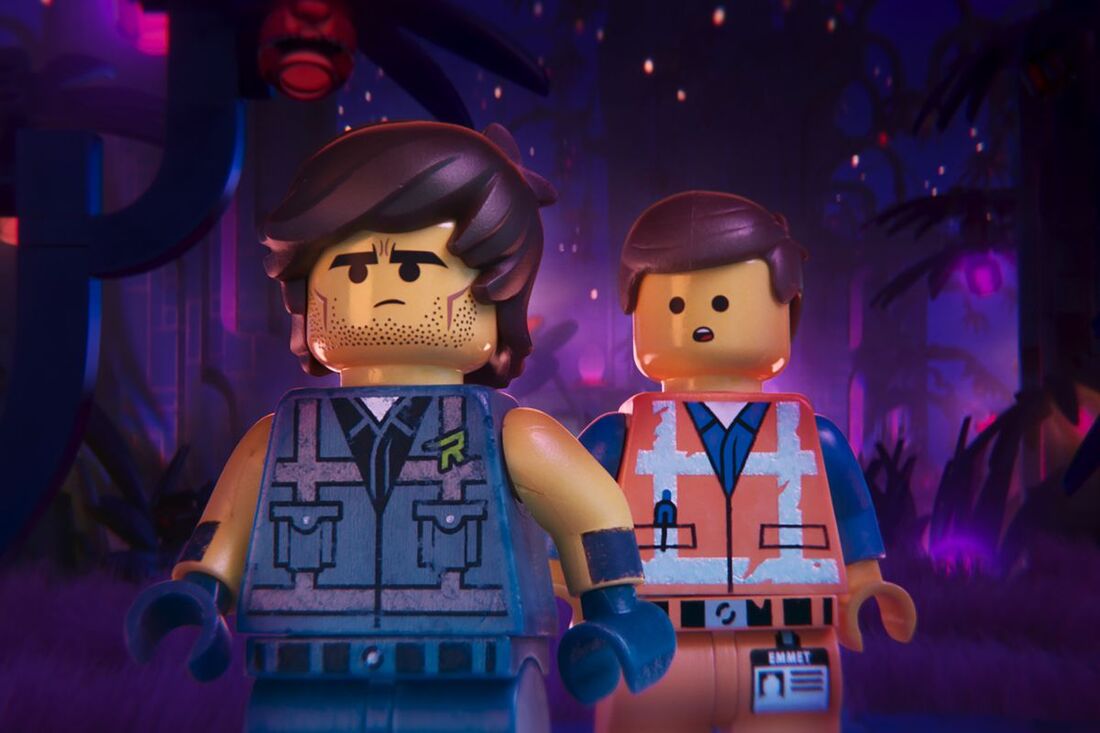Without the huge third act twist that made The LEGO Movie so memorable, The Second Part has to subsist on a straightforward rescue tale in the animated world and a boilerplate story of warring siblings in the real world. Lord and Miller’s script frequently hops back to Finn and Bianca, robbing the film of the fun of translating the fantastical events of the animated world onto a child’s imagination. There’s some of that in background details, like the probability that Ferrell’s father showed Fury Road to his tween son who then adopted that aesthetic for a LEGO city. Without the surprise, the real-world dynamic has to go deeper and consider how difficult it is for the siblings to communicate with each other, evoking a clash of civilizations-style beachside meeting where both parties might have good intentions but an inability to understand each other puts every word and gesture on a knife’s edge. The difference in ages between the guileless younger sister and the growing cynicism of her older brother exacerbates all this in one of the animated world’s better ideas. Lucy, as a representation of the ‘cool’ side of Finn’s personality, distrusts the cutesiness of the Systar system and is sure that anything so earnest has ulterior motives.
The part of Finn that retains his sister’s innocence lives in Emmett, but he’s not immune from wanting to appear cooler. The would-be rescuer immediately needs rescuing himself in the form of Rex Dangervest, a bestubbled rogue also voiced by Pratt who helps Emmett rescue his friends. Animated films since Shrek have made nods to the parents in the audience by shoehorning in pop culture jokes that the kids won’t get, and Rex represents the best possible version of this oft-tiresome trend. Rex is The Second Part’s discursion on Pratt’s career, a very strange and hilarious sidebar that would make more sense in a Comedy Central Roast but somehow works fantastically here. Pratt, the anchor of a handful of huge franchises and various other big-budget tentpoles, got those jobs in part because he used to play the Emmett-like role of Andy Dwyer on Parks and Recreation. After uncountable sit-ups and grilled chicken breasts, he’s got the body of an action star, but does anyone really believe he’s happier shooting against tennis balls and green screens than when was ad-libbing with Amy Poehler and Nick Offerman? Coupled with the frequent outcome of him being outshone in films like Guardians of the Galaxy by CGI creations, maybe Pratt should let Rex turn back into Emmett, a career suggestion that The Second Part signs onto. That this piece of advice fits into the film’s theme of lowering masks and defensive poses makes one wish to be a fly on the wall when Pratt first read the script himself, perhaps calling his agent after and passing on whichever superhero role he’s been offered in favor of a small-budget romp.
Away from what feels like a comedic intervention in Pratt’s career, The Second Part’s deep and frenetic animation holds the viewer’s interest. With the addition of a young girl’s preferences, the set dressing takes a turn for the cute in the Systar system, producing more awww’s than ha’s. Like in the original and in subsequent LEGO movies, so much is happening onscreen but the film never feels cluttered or in need of a Ritalin dosage. There’s a seemingly endless reserve of intellectual property to integrate, but the tone is less reverent than something like Ralph Breaks the Internet and its slobbering homage to corporate monopolies. The Second Part might not be as revelatory as its original, but it accepts its handicap and finds new ways to entertain. It even manages to get in some contemporary advice about bleak times and how to approach them. This might seem out of place in a wide-release animated film, but then, the Second Part is also a very expensive career intervention for Chris Pratt. Anything is possible. B-

 RSS Feed
RSS Feed